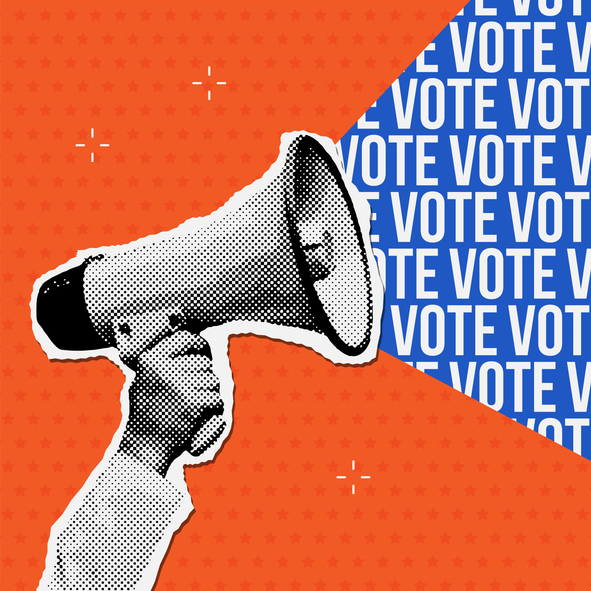In 2024, the battleground for voters’ attention isn’t just on the doorsteps or at town hall meetings; it’s on the screens of their devices. Innovative political campaign managers and marketers increasingly use sophisticated digital advertising strategies to sway voters, mobilize support, and secure electoral victory. This guide outlines eight powerful strategies that can revolutionize your approach to political campaign advertising, ensuring you leverage every tool at your disposal to engage effectively with your audience.
Understanding Your Audience: In-Depth Demographic Research
Understanding the electorate is crucial for a successful digital campaign. When conducting detailed voter segment analysis, you can identify key demographics, interests, and values, allowing you to tailor your ad content to resonate with specific voter groups based on their concerns. To build a strong foundation for your digital campaign, consider:
- Dive deep into voter segment analysis to understand demographics, interests, and values.
- Tailor your ad content to resonate with specific voter groups based on their concerns.
- If available, utilize data from past elections, voter surveys, and social media analytics to make informed targeting decisions.
- Continuously monitor and analyze your ad performance to adjust and optimize your strategy.
- Stay up-to-date with the latest political trends and events to ensure your messaging remains relevant and timely.
Following these steps, you can create a targeted and effective digital campaign to reach and engage potential voters.
Harness the Influence of Social Media Advertising
Social media has evolved into a crucial component of political campaigns, offering extensive reach and precise targeting capabilities. Platforms such as Facebook, Twitter, and Instagram are potent tools for engaging with voters and disseminating your message effectively. They present a distinct opportunity to connect with voters and forge genuine relationships directly. Leveraging social media advertising is imperative to capitalize on this potential.

First and foremost, identify the social media platforms where your target audience is most active. This will depend on your voters’ demographics, so conduct thorough voter surveys to understand their preferences. Once you know the best platforms to reach your audience, you can create targeted ads that resonate with them. Consider using tools like lookalike audiences or interest-based targeting. These tools help you reach users similar to your existing followers or who have shown interest in topics related to your campaign.
Once you’ve chosen the social media platforms for your campaign, focus on building a genuine and organic following. For example, by regularly posting engaging and informative content, you can cultivate a community that actively engages with your message. Using social media listening tools also provides valuable insights into voters’ concerns and sentiments, enabling you to address their needs promptly and effectively.
When strategically and authentically using social media advertising, political campaigns can establish meaningful connections with voters and have a tangible impact on the digital landscape. And who doesn’t want that?!
Get Creative: Content Marketing Magic
z
As a content marketer, I’m frequently asked how to create engaging and compelling content for all industries. Questions like, “How many blog posts do I need to write?” “How many Instagram posts should I post in a week?” and “Should I publish all of my content on all social media platforms?” come up often. Despite the advice from online engagement experts, there’s no “secret sauce” for creating great content. It requires a mix of creativity, thorough research, and understanding of your target audience.
If I were working on your political marketing campaign to boost engagement and reach, here are several “rules of thumb” to live by:
- Learn your audience and what they want to see from your campaign
- Stay up-to-date on current events and repurpose content around them
- Use storytelling techniques to connect with your audience
- Leverage social media marketing with intentionality (don’t half-a** your content development)
- Don’t forget to invest time in your long-form and short-form content strategies equally
- Be transparent and authentic with your message, wherever you put it
- Encourage conversation and engagement with your audience by inserting call-to-actions (CTAs)
- Stay consistent with your messaging across all platforms to maintain a strong brand image
By incorporating these proven content marketing recommendations into your political campaign strategy, you can improve the effectiveness of your outreach efforts. It’s not just about creating content but also about delivering it in a way that connects with your target audience and motivates them to take action. Don’t hesitate to experiment and try new tactics as long as they align with your overall brand message.
Geofencing Marketing For The Win!
Geofencing marketing is a game-changer when reaching out to potential supporters during political campaigns. Harnessing the power of GPS technology, geofencing allows you to connect with voters in specific locations, such as voting precincts or political rallies. Imagine being able to send personalized messages to individuals attending a town hall meeting or a community event – that’s the kind of precision geofencing marketing offers. Whether you’re running for city council or vying for a congressional seat, geofencing marketing can help you engage with voters in a meaningful and impactful way without wasting resources.
Honestly, the “real” beauty of geofencing marketing is its ability to deliver tailored messages to individuals based on their physical location, creating a personalized and relevant experience. Candidates from all walks of the political spectrum can utilize this strategic approach to connect with voters in a way that resonates with their specific needs and concerns over time.
RECAP! Here are some of the critical benefits of employing geofencing marketing for your next campaign :
- Targeted outreach to specific demographics and locations via social media
- Efficient allocation of advertising budget by reaching the right audience
- Personalized messaging based on physical location
- Ability to engage with voters in a way that resonates with their specific needs and concerns
- Once someone walks into a geofenced perimeter, your campaign ad can stick with them up to 30 days after they leave (talk about top of mind!)
Tap into Over-The-Top Advertising (OTT)
Over-the-top (OTT) advertising has emerged as a modern and practical approach for political campaigns to reach and connect with voters through streaming platforms such as Hulu and Netflix. This method offers a compelling and targeted alternative to traditional TV ads, allowing campaigns to engage with specific demographics in a personalized manner.
There are several benefits and ways to use OTT and omnichannel marketing for political campaign marketers effectively:
- Targeted Reach: OTT advertising enables campaigns to reach specific demographics precisely, ensuring the message resonates with the intended audience.
- Personalized Messaging: Campaigns can tailor their messages to individual voters based on their preferences, behaviors, and interests, creating a more personalized and impactful communication approach.
- Multi-Platform Integration: When seamlessly connecting with audiences on multiple platforms like mobile devices, smart TVs, and computers, campaigns can effectively deliver their message to voters wherever they engage with content.
- Enhanced Engagement: Through OTT advertising, campaigns can foster interaction and deepen voter involvement by creating compelling, interactive content that encourages active participation.
- Consistent Branding: OTT advertising allows campaigns to ensure consistent messaging and branding across all channels, reinforcing their identity and message in voters’ minds.
Political campaign marketers can deliver a cohesive message across all screens by integrating OTT and omnichannel strategies that blend multiple platforms and devices. This enhances voter engagement at every touchpoint and enables campaigns to create impactful and personalized interactions with voters, fostering a deeper connection and driving meaningful engagement throughout the electoral process.
Oh, the Stories You’ll Tell: The Power of Video Ads
Video ads are a dynamic way to connect with and captivate your audience. Capture attention immediately by telling a compelling story within the first few seconds. Experiment with various video lengths and formats to discover what resonates with your target audience and use strong call-to-actions to encourage sharing and further engagement.
Ideas for powerful video ads for political campaigns:
- Create short, attention-grabbing videos that highlight key campaign messages and policy positions.
- Utilize emotional storytelling to connect with voters personally and humanize the candidate.
- Incorporate testimonials from supporters or constituents to build credibility and trust.
In addition to the above, consider:
- Split testing (A/B) experiments with different video ad formats to determine which are most effective at driving engagement and conversions.
- Collaborating with influencers or well-known figures to expand the reach of your message and connect with new audiences.
- Using targeted video ads to reach specific demographics or geographic areas where your campaign needs more support.
- Use live streaming platforms like Facebook Live or Instagram Live to engage with voters in real-time and answer their questions.
- Subtitles or closed captions should be incorporated into the video to make it accessible for all viewers, including those who are hard of hearing.
- Keeping videos short and concise to maintain the audience’s attention span.
Remember to incorporate these strategies into your campaign’s video content to effectively communicate your message, connect with voters, and ultimately drive engagement and support for your candidate. Always stay true to the candidate’s brand and values, and continuously monitor and adapt your content based on audience feedback. A strong video strategy can set your campaign for success in the long run.
Increase Visibility with Search Engine Marketing
Let’s start this section by exploring search engine marketing (SEM) and why it’s crucial for promoting your political campaign.
Search Engine Marketing (SEM) is a form of digital marketing that promotes a website by increasing its visibility in search engine results pages (SERPs) through paid advertising. In simpler terms, it’s the process of using ads to drive traffic to a campaign website.

SEM techniques enable you to target particular keywords and phrases associated with your campaign. This ensures your ad appears when potential voters search for information on issues or candidates. Ultimately, SEM allows you to reach individuals who may not have seen your campaign otherwise. With an increasing number of people turning to the internet for information, it seems that SEM is a crucial tool for reaching voters.
Furthermore, SEM includes pay-per-click advertising, where you only pay when a user clicks on your ad, and display advertising, which allows you to place ads on relevant websites. This targeted approach helps maximize the impact of your advertising budget.
If you’re considering search engine marketing (SEM), here is a list of key benefits to remember:
- Increased visibility and brand recognition
- Targeted advertising to specific demographics
- Cost-effective advertising through a pay-per-click model
- Ability to track and measure campaign performance
- Potential for immediate results and lead generation
- Opportunity to capitalize on high-intent user searches
- Flexibility to adjust and optimize campaigns in real-time
Don’t miss out—incorporate SEM into your political digital marketing strategy today!
Follow The Money: Budgeting For Your Political Ads
Finally, let’s discuss the elephant in the room: the budget. Cue the shocking theme music at the end of the whodunnit episode. The advertising budget may vary depending on the size of the politician’s campaign. However, effective political advertising doesn’t have to be overly expensive. We have outlined various methods for digital marketers to maximize their budgets while serving their clients.
It’s crucial to create a well-planned digital advertising budget that aligns with your specific needs and objectives. This will help in determining the allocation for different types of online ads, including display ads, social media ads, and search engine marketing.
Your budget should be aligned with your campaign goals and target audience. For instance, if you are targeting a younger demographic, it might be wise to invest more in social media advertising. Conversely, if your focus is on reaching an older population, traditional display ads might be more effective. Additionally, consider the cost per click or impression for each ad type to ensure that you are maximizing your budget.
Ultimately, tailoring your budget to your campaign’s requirements and understanding the potential audience is essential for effective political advertising.
Conclusion

To remain competitive in the fast-paced world of political campaigning, it’s crucial to adopt a strategic, data-driven approach to digital advertising. If the goal is to connect with voters, utilizing digital advertising solutions is essential for achieving success. Embracing the evolution of digital advertising allows political campaign managers and online marketers to enhance their impact and drive electoral success. Looking ahead, it’s evident that digital advertising will continue to be a driving force in political campaigning, and leveraging these strategies will be essential for campaigns aiming to leave a lasting impression on voters.
If you’re an advertising professional seeking advice or white-label partner resources for your next political ad campaign, email hello@propellant.media. Our team of seasoned experts is prepared and eager to assist you. Contact us today to take the first step toward optimizing your campaign’s impact!

